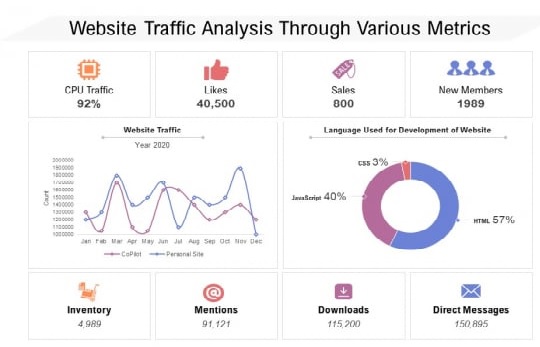In a world increasingly reliant on technology and interconnectedness, new challenges arise. One such challenge is the emergence of threats like AG2GA31. This article aims to delve into the intricacies of AG2GA31, shedding light on what it is, the risks it poses, and how to protect yourself from it. So, fasten your seatbelts as we embark on a journey to understand this enigmatic digital entity.
What is AG2GA31?

AG2GA31 is not a household name, and for good reason—it represents a potentially nefarious digital threat. It belongs to the category of malware, a term that encompasses various types of malicious software designed to infiltrate, damage, or compromise computer systems and data. Malware often includes viruses, worms, spyware, and trojans, and AG2GA31 is no different.
AG2GA31 is a specific strain of malware that has gained notoriety for its stealthy infiltration methods and ability to wreak havoc on a variety of systems. Its name may not sound menacing, but it carries the potential to disrupt your digital life significantly. This malware can be distributed via infected downloads, phishing emails, or compromised websites, making it essential to understand the risks it poses.
What are the risks posed by AG2GA31?
It presents several grave risks to individuals and organizations. Here are some of the primary dangers associated with this malware:
- Data Theft: AG2GA31 can compromise sensitive information such as personal data, financial records, and confidential business data. This information can be exploited for criminal purposes, including identity theft and financial fraud.
- System Compromise: Once inside a system, AG2GA31 can weaken security measures, creating a pathway for further cyberattacks or unauthorized access to your computer.
- Data Corruption: The malware can damage or corrupt files and software, rendering your system inoperable or causing significant data loss.
- Ransomware: AG2GA31 can also be a delivery method for ransomware, a type of malware that encrypts your files and demands a ransom for their release.
- Botnet Participation: Infected devices can be recruited into a botnet, a network of compromised computers controlled by cybercriminals, potentially being used for various malicious purposes, including launching large-scale cyberattacks.
How to protect yourself from the AG2GA31 virus
Now that you understand the potential risks associated with AG2GA31, it’s crucial to know how to protect yourself from falling victim to this malware. Here are some proactive steps to safeguard your digital life:
- Keep Software Updated: Regularly update your operating system and all software to ensure you have the latest security patches and updates. Cybercriminals often target vulnerabilities in outdated software.
- Use Antivirus Software: Invest in reliable antivirus software that can detect and remove malware, including AG2GA31.
- Exercise Caution Online: Be cautious when clicking on links or downloading files from unknown or suspicious sources. Always verify the sender’s authenticity in emails, and avoid clicking on suspicious links.
- Backup Your Data: Regularly back up your important data to an external source or cloud storage. This ensures that even if your data is compromised, you can recover it.
What you can do to reduce your risk of infection
Reducing your risk of AG2GA31 infection involves practicing good digital hygiene and maintaining a security-conscious mindset. Here are some additional steps to minimize your vulnerability:
- Enable Two-Factor Authentication (2FA): Implement 2FA wherever possible to add an extra layer of security to your online accounts.
- Educate Yourself: Stay informed about emerging cyber threats and best cybersecurity practices. Knowledge is a potent tool in the fight against malware.
- Firewall Protection: Use a firewall to monitor and filter incoming and outgoing network traffic to prevent unauthorized access.
- Regular Scans: Conduct regular scans of your system with your antivirus software to detect and remove any potential threats.
You may also like :Unraveling Örviri: The Linguistic Enigma
FAQ’s:
Q1: What is AG2GA31?
It is a type of malware, a malicious software, known for infiltrating computer systems to steal data, compromise security, and cause damage.
Q2: How does AG2GA31 spread?
AG2GA31 typically spreads through infected downloads, phishing emails, or compromised websites. It’s essential to be cautious when interacting with unknown online content.
Q3: What are the risks of AG2GA31?
That poses several risks, including data theft, system compromise, data corruption, potential involvement in botnets, and the possibility of delivering ransomware.
Q4: How can I protect myself from AG2GA31?
To protect yourself from AG2GA31, keep your software updated, use reliable antivirus software, exercise caution online, and regularly back up your data.
Q5: What should I do if I suspect my system is infected with AG2GA31?
If you suspect your system is infected, run a full scan with your antivirus software, disconnect from the internet, and seek professional assistance to remove the malware and mitigate any potential damage.
Conclusion
AG2GA31 may not be a household name, but it’s a threat that should not be underestimated. This malware can cause significant harm, from data theft to system compromise, and it’s crucial to take steps to protect yourself from it. By staying informed, maintaining good digital hygiene, and investing in reliable security software, you can greatly reduce the risk of falling victim to AG2GA31 and similar digital threats. Stay vigilant, and remember that knowledge is your best defense in the ever-evolving landscape of digital security. Visit



